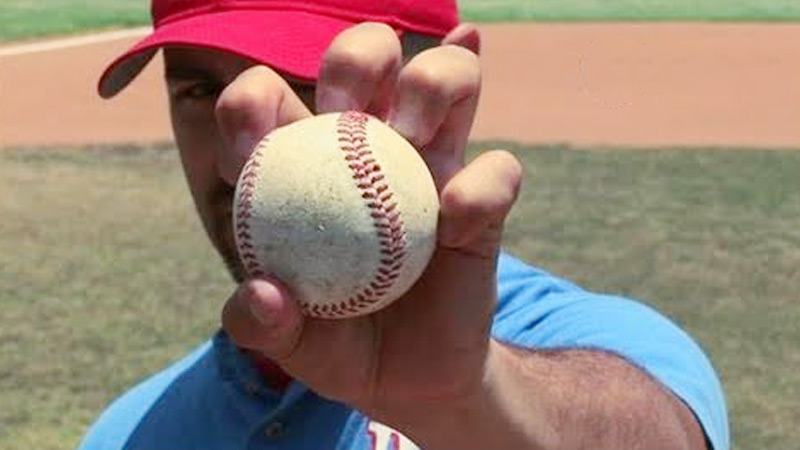Throwing a knuckleball in baseball can be a challenging yet highly effective pitching technique.
The knuckleball is known for its unpredictable and erratic movement, making it difficult for batters to anticipate its trajectory.
In this comprehensive guide, we will delve into the mechanics and intricacies of throwing a knuckleball, providing step-by-step instructions and invaluable tips to help you master this unique pitch. So, get ready to know more.
What Is a Knuckleball in Baseball?
A knuckleball is a pitch in baseball characterized by its lack of spin. Unlike other pitches, such as fastballs or curveballs, which rely on spin for movement, the knuckleball relies on aerodynamic forces to create its unpredictable path.
When thrown correctly, the knuckleball will have minimal rotation, causing it to flutter and wobble as it approaches the batter.
This unusual movement makes it challenging to hit and often frustrates even the most skilled batters.
How To Throw A Knuckleball In Baseball?
The process of throwing a knuckleball in baseball is discussed in the following section. Please take a look at that below.
Step 1: Try Gripping the Knuckleball in Different Ways
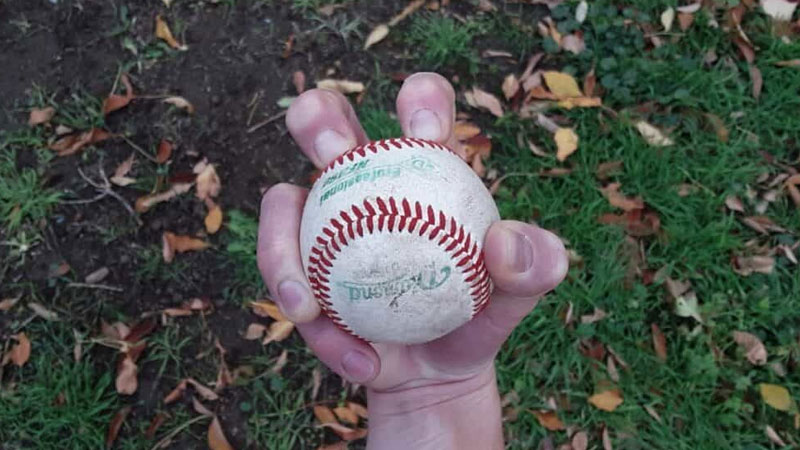
Source: baseballtrainingworld.com
The grip is crucial when throwing a knuckleball. Experiment with different grip styles to find the one that works best for you. The most common grip styles include the two-finger grip, three-finger grip, and four-finger grip.
Two-Finger Grip
Place your index and middle fingers directly on top of the ball, with your fingertips pressed against the seams. The thumb should be placed lightly against the side of the ball.
Three-Finger Grip
Similar to the two-finger grip, but add the ring finger to the mix. The ring finger rests next to the middle finger, forming a triangle with the thumb.
Four-Finger Grip
Spread your index, middle, ring, and pinky fingers evenly across the seams of the ball. This grip provides more stability but may sacrifice some of the knuckleball’s erratic movement.
Step 2: Choose the Right Grip Style
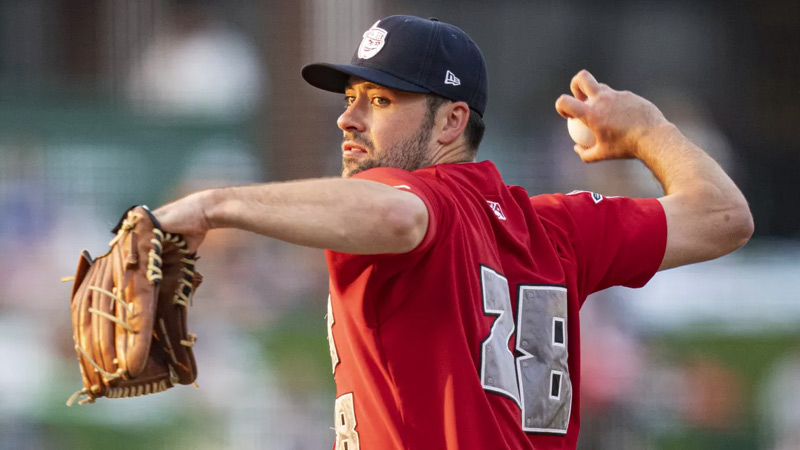
Source: sandiegouniontribune.com
After experimenting with different grip styles, choose the one that feels most comfortable and allows you to achieve the desired movement.
Keep in mind that the grip can vary from pitcher to pitcher, so it’s essential to find the grip that suits your hand size, finger strength, and flexibility.
Step 3: Accelerate Your Motion
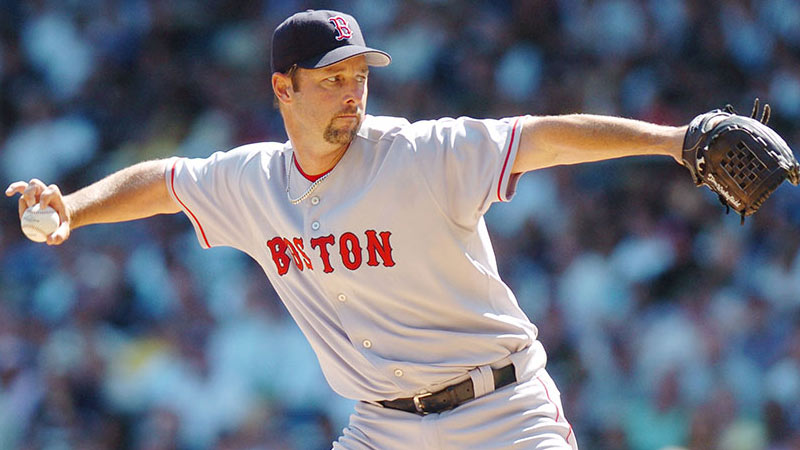
Source: sciencenews.org
To maximize the effectiveness of your knuckleball, you need to generate enough velocity. While the knuckleball is generally thrown at a slower speed than other pitches, it still requires a quick and explosive throwing motion.
Focus on accelerating your arm and generating power from your legs and core.
Step 4: Keep Your Wrist Up

Source: wezen-ball.com
Maintaining a stable wrist position is crucial for a successful knuckleball. Avoid snapping your wrist or applying excessive pressure on the ball. Instead, keep your wrist relaxed and slightly bent backward, allowing the ball to roll off your fingertips smoothly.
Step 5: Set a Point for Throwing
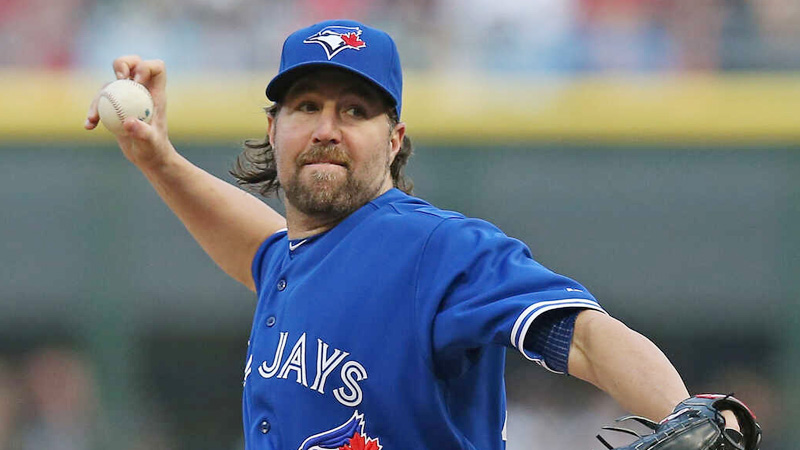
Source: npr.org
Before releasing the ball, establish a target or point of reference to ensure consistency in your delivery. This can be a spot on the catcher’s glove or a specific location within the strike zone.
Having a focal point helps maintain accuracy and control, even with the knuckleball’s unpredictable movement.
Step 6: Release the Ball From Your Fingertips
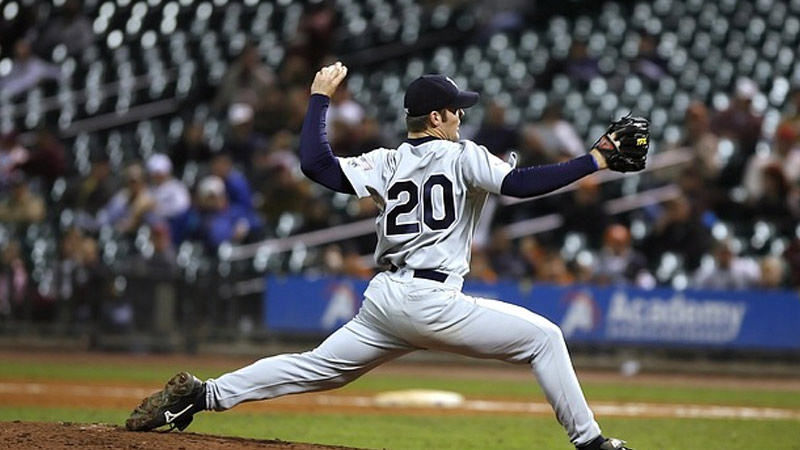
Source: selectbaseballteams.com
As you complete your throwing motion, release the ball from your fingertips. This step is critical to achieving the desired fluttering effect.
By letting the ball roll off your fingertips instead of spinning off your hand, you allow the aerodynamic forces to take over and create the knuckleball’s unique movement.
Tips for Throwing the Knuckleball
Some tips for throwing the knuckleball properly are mentioned in the next part. Go through them with extra care.
Master the Art of Relaxation
One of the essential aspects of throwing a successful knuckleball is learning to stay relaxed throughout your delivery. Tension in your muscles can hinder the pitch’s movement and prevent it from fluttering and wobbling as intended.
From your fingers to your throwing arm and body, focus on maintaining a relaxed state. Start by loosening your grip on the ball, ensuring that you’re not squeezing it tightly. This allows for a cleaner release and better control of the pitch.
Throughout your delivery, be mindful of any unnecessary tension and consciously work on releasing it. Practice deep breathing techniques and visualize a smooth, effortless motion.
By mastering the art of relaxation, you’ll enhance your ability to throw an effective knuckleball.
Embrace Variations in Speed
While the knuckleball is typically thrown at a slower speed compared to other pitches, incorporating variations in velocity can make it even more challenging for batters to anticipate.
By mixing in faster and slower knuckleballs, you can keep hitters off balance and increase the pitch’s effectiveness.
Experiment with adjusting the speed of your delivery while maintaining the same grip and release. This variation can disrupt a batter’s timing and make it difficult for them to adjust to the pitch’s movement. However, it’s crucial to maintain control and accuracy regardless of the speed.
Practice different speeds during your training sessions and pay attention to the reactions of batters during practice games to find the right balance between speed and movement.
Practice, Practice, Practice
Perfecting the knuckleball requires dedicated practice and a commitment to regular training sessions. Consistent repetition of the mechanics and techniques involved will help you refine your grip, release, and overall command of the pitch.
Set aside specific practice time focused solely on the knuckleball. Work on your grip variations, focus on your delivery motion, and experiment with different release points.
The more you practice, the better your muscle memory becomes, and the more natural the pitch will feel. Additionally, incorporating drills that simulate game situations can help you develop the ability to throw the knuckleball under pressure.
Remember, practice not only improves your physical execution but also builds confidence in your ability to throw the pitch effectively.
Study the Masters
To enhance your understanding and mastery of knuckleball, take the time to study successful knuckleball pitchers. Watch game footage, interviews, and documentaries featuring renowned knuckleballers.
Pay close attention to their grip variations, delivery mechanics, and release points. Observe how they adjust their technique in different situations and against different batters.
Take note of their mental approach and how they handle adversity. By studying the masters, you can gain valuable insights and incorporate their techniques into your own pitching style.
While it’s essential to develop your unique approach, learning from those who have mastered the art of knuckleball can provide valuable guidance and inspiration.
Adapt to Different Conditions
The movement of the knuckleball can be affected by external factors such as weather conditions. Factors like wind and humidity can impact the pitch’s flight and unpredictability.
To maintain control and effectiveness, learn to adapt your grip and delivery based on the circumstances. For example, if there is a strong tailwind, you may need to adjust your grip or release point to compensate for the added force on the ball.
Similarly, in high humidity, the ball may become slick, affecting your grip. Experiment with different grips and practice throwing in varying weather conditions to become familiar with the adjustments required.
By adapting to different conditions, you can maintain control of the knuckleball and maximize its effectiveness regardless of external factors.
FAQs
Can anyone learn to throw a knuckleball?
Yes, anyone can learn to throw a knuckleball. One of the most intriguing aspects of the knuckleball is that it doesn’t require a specific body type or exceptional physical attributes.
Unlike other pitches that may rely on power or athleticism, the knuckleball emphasizes finesse and control.
With practice, patience, and dedication, pitchers of varying skill levels can develop the necessary skills to throw a knuckleball effectively.
How fast should I throw a knuckleball?
Knuckleballs are typically thrown at speeds ranging from 60 to 80 miles per hour. However, it’s important to note that the velocity of the knuckleball is not as significant as the movement and control it generates.
Unlike traditional pitches that often prioritize speed, the knuckleball’s effectiveness lies in its unpredictable path and lack of spin.
Therefore, while maintaining a suitable speed is essential to prevent the pitch from becoming too hittable, the focus should primarily be on mastering the pitch’s movement and maintaining control.
Why is the knuckleball so difficult to hit?
The knuckleball is notoriously difficult to hit because of its lack of spin. Most pitches rely on the grip and spin to create movement, making it easier for batters to anticipate the ball’s trajectory.
However, the knuckleball’s unique lack of spin allows it to move erratically, making it incredibly challenging for batters to predict its path.
This unpredictability, combined with the pitch’s slower speed, creates a formidable challenge for hitters who struggle to time their swing and make solid contact.
Can a knuckleball be thrown for strikes consistently?
Throwing a knuckleball for consistent strikes can be challenging, especially considering its unconventional movement. However, with practice and control, pitchers can develop the ability to locate the pitch within the strike zone more reliably.
Mastering the knuckleball’s control involves honing the release point, and grip consistency, and understanding how slight adjustments can influence its movement.
While achieving pinpoint accuracy with every knuckleball may be elusive, diligent practice and an understanding of the pitch’s nuances can help pitchers throw strikes more consistently.
Are there any risks associated with throwing a knuckleball?
Throwing a knuckleball does not pose any specific risks compared to other pitching techniques. However, as with any repetitive motion involved in baseball, it is essential to maintain proper mechanics and avoid overuse to prevent injury.
Pitchers should pay attention to their arm and shoulder health, practice appropriate warm-up and cooldown routines, and listen to their bodies to avoid strains or other pitching-related injuries.
End Call
Mastering the art of throwing a knuckleball in baseball requires patience, persistence, and a willingness to embrace the unique challenges it presents.
By understanding the grip, focusing on technique, and incorporating tips from experienced knuckleball pitchers, you can develop a devastating pitch that keeps batters guessing and enhances your effectiveness on the mound.
So, go out, practice diligently, and add the knuckleball to your pitching repertoire, knowing that you possess a pitch that can baffle even the most skilled hitters. Best of luck.

